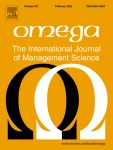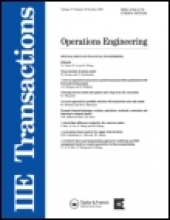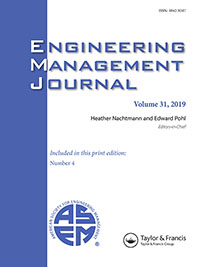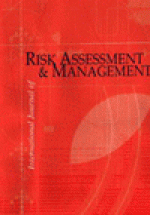In my dissertation, I developed models for locating and protecting facilities that are subject to disruptions caused by attacks from an adversary (i.e., interdictions) or random events (e.g., natural disasters). My dissertation made several contributions:
- The problem of designing and protecting networks subject to interdictions is often modeled using a tri-level mathematical program. We showed that the minimax facility location problem with interdiction can be solved very efficiently using a single-level model due to the problem structure.
- We contributed a model and efficient solution procedure for making facility location and facility hardening decisions in tandem.
- We studied a new facility protection problem in which allocating resources to a facility only has a probabilistic effect on the facility’s post-disruption capacity. We modeled this problem as a two-stage stochastic program with endogenous uncertainty and solved it using a greedy algorithm with a performance guarantee and the L-shaped method.
Complementing my dissertation, I have done other work on designing and protecting networks. I have coauthored a literature review on network vulnerability. In another project, my co-authors and I addressed the need for network disruption models with multiple objectives such as cost, efficiency, and risk. Finally, I have also done work on using a bi-level optimization model to compute the vulnerability of a unit-train railway network.
Mike Sherwin (one of my Ph.D. students) and I completed a study on using fault trees to model disruptions in a supply chain as well as using these fault trees within an optimization model for allocating resources. Working with Rui Zhou, we extended this work to minimize the cost of delays within a supply chain.
More recently, I have been working on predicting and mitigating the risk of part obsolescence within a supply chain.
Selected Publications
-
A stochastic programming model with endogenous uncertainty for proactive supplier risk mitigation of low-volume-high-value manufacturers considering decision-dependent supplier performance
Rui Zhou, Bhuiyan, Tanveer Hossain, Michael Sherwin, and Medal, H.. Zhou, Rui, Tanveer Hossain Bhuiyan, Hugh R. Medal, Michael D. Sherwin, and Dong Yang. "A stochastic programming model with endogenous uncertainty for selecting supplier development programs to proactively mitigate supplier risk." Omega 107 (2022): 102542.
Publication Year: 2022
[Link to Article] Abstract -
Identifying and mitigating supply chain risks using fault tree optimization
Sherwin, M., Brown, K. J., Medal, H., and Mackenzie, C.. Michael D. Sherwin, Hugh R. Medal, Cameron A. MacKenzie & Kennedy J. Brown (2020) Identifying and mitigating supply chain risks using fault tree optimization, IISE Transactions, 52:2, 236-254
Publication Year: 2020
[Link to Article] Abstract -
A stochastic programming model with endogenous and exogenous uncertainty for reliable network design under random disruption
Bhuiyan, T. H. and Medal H.. Bhuiyan, T. H., Medal, H. R., & Harun, S. (2020). A stochastic programming model with endogenous and exogenous uncertainty for reliable network design under random disruption. European Journal of Operational Research, 285(2), 670-694.
Publication Year: 2020
[Link to Article] Abstract -
A Model-Based Systems Engineering Approach to Critical Infrastructure Vulnerability Assessment and Decision Analysis
Huff, J. D., Medal, H., and K. A. Griendling. Submitted to Systems Engineering 22(2), 114–133.
Publication Year: 2019
[Link to Article] Abstract -
NATO Human View Executable Architectures for Critical Infrastructure Analysis
Huff, J. D., Leonard, W., B. Smith, K. Griendling, and Medal, H.. Engineering Management Journal. 31:4, 224-245.
Publication Year: 2019
[Link to Article] Abstract -
Proactive Cost-Effective Risk Mitigation in a Low Volume High Value Supply Chain Using Fault-Tree Analysis
Michael D. Sherwin, Hugh Medal, Steven A. Lapp. International Journal of Production Economics, Volume 175, Pages 153–163
Publication Year: 2016
[PDF] [Link to Article] Abstract -
A Bi-objective Analysis of the R-All-Neighbor P-Center Problem
Hugh R. Medal, Chase E. Rainwater, Edward A. Pohl, Manuel D. Rossetti. Computers & Industrial Engineering, Volume 72, Pages 114–128
Publication Year: 2014
[PDF] [Link to Article] Abstract -
A Multi-objective Integrated Facility Location-Hardening Model: Analyzing the Pre- and Post-Disruption Tradeoff
Hugh R. Medal, Edward A. Pohl, Manuel D. Rossetti. European Journal of Operational Research, Volume 237, 257– 270
Publication Year: 2014
[PDF] [Link to Article] Abstract -
Robust Facility Location: Hedging Against Failures
Ivan Hernandez, Jose Emmanuel Ramirez-Marquez, Chase Rainwater, Edward Pohl, Hugh Medal. Reliability Engineering & System Safety, Volume 123, Pages 73–80
Publication Year: 2014
[PDF] [Link to Article] Abstract -
Vulnerability Assessment and Re-routing of Freight Trains Under Disruptions: A Coal Supply Chain Network Application
Ridvan Gedik, Hugh Medal, Chase Rainwater, Ed A. Pohl, Scott J. Mason. Transportation Research Part E, Volume 71, 45–57
Publication Year: 2014
[PDF] [Link to Article] Abstract -
Models for reducing the risk of critical networked infrastructures
Hugh Medal, Stevenson J. Sharp, Ed Pohl, Chase Rainwater, Scott J. Mason. International Journal of Risk Assessment and Management, Volume 15 (No. 2/3), Pages 99-127
Publication Year: 2011
[PDF] [Link to Article] Abstract












